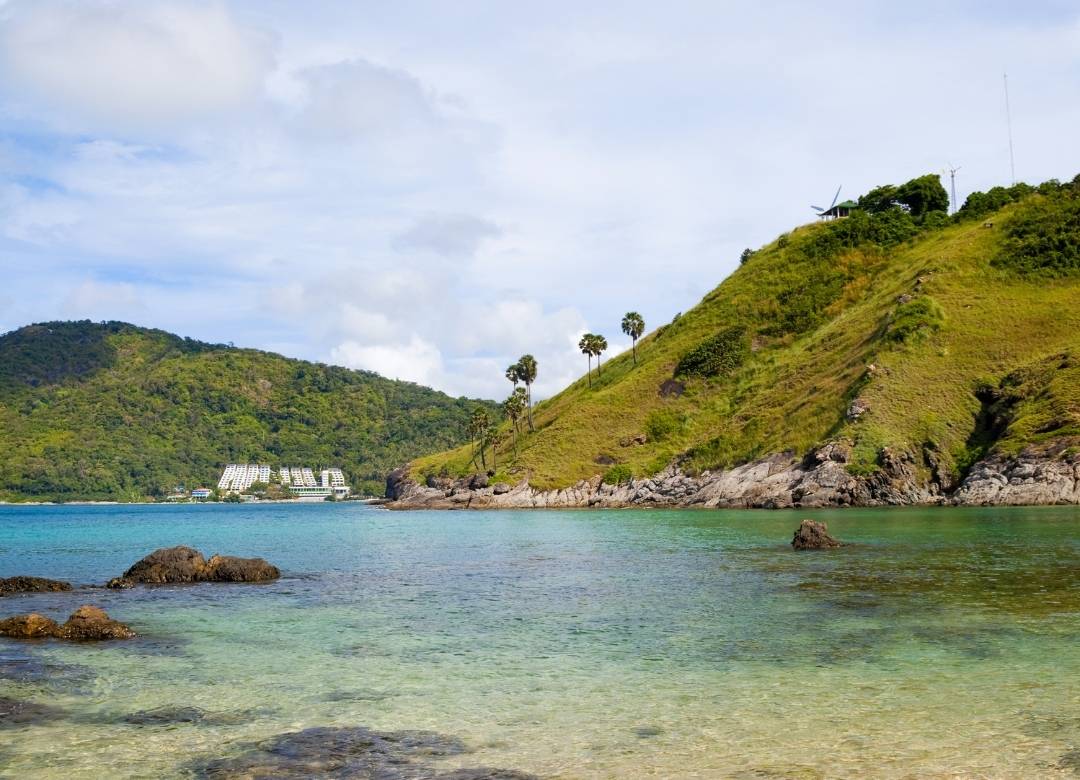Destinations, Things to do
The best time to visit Phuket: month-by-month guide
The best time to visit Phuket: month-by-month guide
Located on Thailand’s breathtaking Andaman Coast, Phuket is the country’s largest and most popular island. Every year, it welcomes millions of visitors from all over the world, with over 30,000 visitors per day.
Phuket is also considered an ideal honeymoon destination. With countless things to see and do, many say it is Thailand’s best island.
Whether you desire to sunbathe on one of its white-sand beaches, go scuba diving or snorkeling, or simply eat some of the delicious food, Phuket is every traveler’s dream as it has everything you need for an enjoyable trip.
With so much to offer, it is tough to decide when to visit Phuket. While it is possible to visit the island all year round, heavy rainfall sometimes restricts access to certain areas.
Similarly, strong winds occasionally make some beaches too dangerous to access. But don’t you worry, we are here to tell you about the best time to visit Phuket.
The best island tour from Phuket, perfect for all seasons, is still the James Bond island tour
Below you will find our month-by-month guide to this incredible destination which will help you plan your much-awaited trip:
January
Phuket lies close to the equator so average temperatures don’t vary much, but rainfall varies significantly every month, so this is the main factor to consider when planning your trip.
In terms of rainfall, January is one of the best months to visit the island, as the average expected rainfall is around 35 mm over a just a short five-day period. Also, temperatures do not exceed 32 °C, making the atmosphere dry and warm and therefore suitable for venturing out in Phuket.
February
January and February have similar average maximum temperatures, with expected highs of 33 °C. However, at 30 mm, the rainfall is considerably lower than the previous month, making February the driest month of the year.
With calm seas, and mostly blue skies, visitors have the opportunity to enjoy their stay without being interrupted by bad weather conditions.
March
The average maximum temperature increases to 34 °C in March. However, spiking humidity levels mean the weather gets quite hot, which some visitors find uncomfortable and need to rely on air conditioning to survive the heat.
Although March does not see rain often, any rain comes in the form of short bursts, and the humidity is still high. The days are sunny and somewhat suffocating, so not ideal for tourists.
April
While April’s temperatures don’t reach more than 34 °C, it is still regarded as one of the hottest and most humid months of the year, and humidity levels continue to increase as the month goes by.
The only difference between March and April is that it rains a lot in April. The average amount of precipitation is 160 mm, which means rain showers are frequent.
But don’t worry, the rain doesn’t last very long, so it is unlikely to ruin your plans. Just remember to carry a light umbrella with you in case of heavy rainfall.
May
May’s average daytime temperature remains around the same as that of April, but nighttime temperatures drop to 29 °C.
The rainfall level stays at 350 mm, making the days very hot and the nights very wet and uncomfortable. As the month enters its latter half, the island is hit with the prime of the monsoon season and things seem to get stickier and damper. If you are not a big fan of mosquitoes, then possibly avoid visiting in July.
June
The average temperature in June stays at a high of 32 °C, with lows of around 24 °C. Like May, June also sees many days of rainfall.
What differentiates June from the previous months, however, is the fact that visitors must expect short bursts of heavy rainstorms and thunderstorms instead of light frequent showers.
Between the storms, expect nice sunny skies and cool breezes. However, if stormy rain is not your thing, visiting Phuket during June is not advisable.
July
July brings increasingly cool winds, making the outside atmosphere rather pleasant and much more comfortable.
Even though both the expected rainfall and the number of rainy days are higher than the previous month, the weather seems to be more bearable because of the winds.
The average maximum temperature lies around 31 °C. Popular activities for this month include swimming and scuba diving.
August
The average maximum temperature in August remains at around 31 °C, and the precipitation amount is the same as in July.
However, in August, rainy days are limited to ten days only, making it considerably easier for visitors to plan activities.
The rain falls in short bursts like before and is followed by cooling breezes which make both the inside and outside temperatures very pleasant and enjoyable.
September
The wettest month of the year brings heavy downpour, thunderstorms, and long periods of rain, stretching up to a whopping 19 days. The average temperature in September stays at 30 °C.
The rain is usually followed by intense periods of humidity, where the air moisture level peaks at approximately 90%, making it very uncomfortable to be in Phuket.
The weather seems suffocating and very difficult for the tourists to bear. Visiting the beach is also not the best idea as September’s strong winds make the waves go higher and higher, claiming a few lives each year.
October
The island starts to see the departure of the monsoons in October. Nevertheless, expect still to see 310 mm of rainfall in this month.
But since the rain stretches over 23 days, thunderstorms and heavy downpours are not expected. In October, you’re more likely to see light showers followed by sunny and humid conditions.
Beaches remain closed as conditions are still too dangerous; however, it is still possible to go fishing. The average maximum temperature remains at 31 °C.
November
Temperatures still do not reach above 31 °C in this month, but the weather is much more pleasant in terms of humidity levels and rainfall.
The monsoons are redirected and there are only cool breezes, making the overall atmosphere very pleasant.
Whatever remains of the monsoon falls over a duration of 16 days and rainfall does not exceed 190 mm. The oceans are open for tourists to sit by and relax.
December
The monsoon officially comes to an end in December, allowing those who are not so fond of the rain to come and relax comfortably on the island.
The humidity levels also decrease to about 70- 75%, further improving the climatic conditions, meaning less reliance on air conditioning, and more time strolling around markets and on beaches.
The average daily temperature falls as the month passes by, hitting at a low of 27 °C as December ends. Otherwise, the average is approximately 31 °C.
Conclusion – the best time to visit Phuket:
Deciding which time to go to Phuket honestly depends on what you want to do there. If you are after good beach weather, then December to March is the best time to visit as you’ll experience less rainfall and plenty of sunshine.
Expect blue skies, calm water, sunshine, and rare, yet bearable, rainfall during these months. However, for activities such as diving, visiting Phuket between November and April is recommended.
If you’re looking for more information about Thailand or any other country you’d like to visit, check out Backpackertrail. The German start-up knows all about backpacking and will help you to plan your adventure, have the best trip possible, and experience the world in all its glory.
Find information about climates, the best beaches, activities, and so much more. Enjoy your trip!
To follow up on a wonderful itinerary idea, here are the best tips to visit Phi Phi Don in the low season.







![Alternative view of Premium James Bond Island Tour by Speed boat - Phuket [with Naka island - from Royal Phuket Marina]](https://mythailandtours.com/wp-content/uploads/2016/06/james-bond-island-departure-300x300.jpg)

